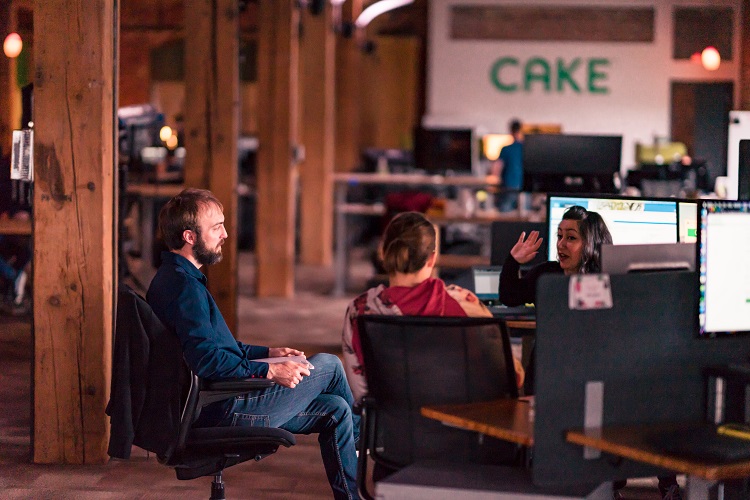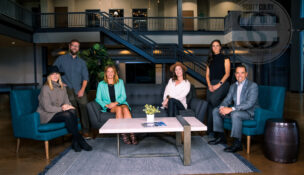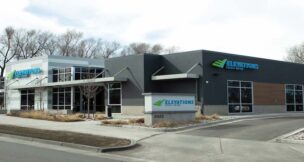How to Develop an Innovative Culture using Human-Centered Design


How to Develop an Innovative Culture using Human-Centered Design

“More Business. Less Work. Cake prioritizes customers by taking the work out of worker’s comp.”
It’s evident from the tagline of the company where I work — Cake Insure (a subsidiary of Colorado workers’ comp insurer, Pinnacol Assurance) — that one of our primary goals is being approachable to customers.
Cake changes the workers’ compensation customer experience for Colorado businesses through human-centered design. Cake’s capabilities focus on allowing users to get a quote in an average of two minutes (two minutes and seven seconds to be exact) and finalize their insurance policy in just five minutes or less.
Taking customer experience to the next level through constant design evolution is especially crucial in the dry, stiff world of commercial insurance. Modern consumers expect simple, smart, fast and personalized digital interactions, whether they’re buying a new pair of shoes or purchasing insurance for their small business. To be blunt, businesses that don’t prioritize the digital customer experience risk extinction.
Traditionally, the workers’ comp purchase process is fraught with conversations surrounding workplace safety, employee wellbeing and policy quotes. We know running a small business is hard but getting workers’ comp insurance doesn’t have to be.
As Cake’s chief of staff, I’ve dedicated myself to applying the same holistic principles to how we approach our most important customers: employees. To foster an innovative and welcoming culture, Cake fuses fundamental human-centered design (HCD) principles in its everyday company culture: empathy, problem-solving, ideation and testing.
Cultivating a company culture that values employees as humans is pivotal when attracting and retaining top-tier talent. Glassdoor found that more than three-quarters of prospective employees consider a company's culture before applying, and half feel that culture matters more than salary when it comes to job satisfaction.
Take a closer look at the four ways Cake leverages human-centered design to foster a culture that improves its employee’s experience and encourages innovation across departments.
Empathy: Surprise and delight your employees
One of my all-time favorite philosophies is anticipating and meeting needs before they’re identified. Just like the HCD principle of empathizing with your users, increasing workplace satisfaction requires identifying, observing and analyzing employee needs.
Consider Amazon’s now-ubiquitous two-day shipping: Who knew we needed that? Amazon took a deeper look at their consumer’s experience and offered a solution long before it was ever asked for.
It's important to empathize and connect with your team by asking about their workplace preferences and concerns. However, it’s also possible to create an element of surprise when it comes to employee satisfaction.
An opportunity to delight my team presented itself when relocating to our new Denver office. Before moving, I asked what the team’s desired amenities were. Along with the requested workout space, I surprised them with a nap room complete with some plush blankets and a comfortable recliner for some serious snoozing.
What’s so wonderful about the tiny addition is that no one specifically requested it — and, to my delight, has ended up being a huge hit even in its most simplistic form.
Defining problems: Workspace flexibility
Cake started in a coworking space — perfect for its initial small team back in 2016. As it expanded, Cake moved into a permanent space in Feb. 2019. While the new Denver office wasn't perfect at first, it was swiftly adapted it to fit the needs of our team. To ensure a multi-functional and productive environment, I took note of the different area uses by employee in the new company home.
Observing the unique uses of the office allowed me to proactively find solutions for issues and growing pains that arose as Cake expanded its team.
When the company first relocated, one of my observations was that employees often used larger conference rooms as drop-in spaces for work-related and private phone calls. This posed a problem as the team grew and conference rooms became more in demand for meetings. To accommodate the increasing needs of the team, I experimented with the addition of phone booths — an amenity that recently became a permanent office fixture.
In my experience, I’ve found it's best to start with the easiest iteration of potential change and see how it can grow and flourish over time.
Ideate and prototyping: Culture keeping as a team effort
Why have one person responsible for creating a workplace culture intended for the whole company? It just doesn’t make any sense. That's why, at Cake, we look at the big picture when it comes to formulating an engaging and awesome company culture.
At Cake, any team member with a vision that will amplify the company culture can oversee a trial implementation of their idea. Just like the ideation and prototyping stages of HDC and product design, employees are welcome to test ideas that have the potential to enrich our culture.
Cake’s employees have implemented their ideas by hosting team-wide happy hours, cupcake-decorating events and volunteer opportunities. At these events, employees connect on a more personal level that transcends daily work responsibilities. Cultivating opportunities for your team to bond and socialize encourages daily communication that is more empathic, open and honest when working together.
Uplifting our team by supporting everyone to have a voice and test their new ideas has become the backbone of Cake’s dynamic company values.
Test and iterate
Experimentation and testing are key when developing successful product designs and an empowering and innovative work environment.
Cake’s experiments with office culture mirror our product development process. We continue to improve both our culture and products through ideation, building, testing and continuous iteration.
An idea often goes through many revisions until it works seamlessly. What’s most important is ensuring your company’s leadership doesn’t let fear get in the way of testing employee ideas. Continuous experimentation is at the heart of innovation.
Trusting in your team’s expertise reinforces that your company values their ideas, intelligence and ambition. After all, nothing stifles innovation like stifling the individual. Displaying confidence in your employees supports their curiosity and creativity on both a personal and professional level.
Empowering Cake's employees is what allows the company to consistently disrupt the workers’ comp industry with innovative, smart technology that prioritizes our customers’ experience and business.
(This sponsored content was provided by Pinnacol Assurance.)
 Tiamo Wright is Cake Insure’s chief of staff. She fearlessly leads Cake through carefully curated culture and business operations. Wright embodies the company’s values of humility, openness, curiosity, supportiveness, drive and positivity. She loves startups. Her background in high-growth companies, strategic partnerships and building teams and environments where people want to work have led to her success at Cake.
Tiamo Wright is Cake Insure’s chief of staff. She fearlessly leads Cake through carefully curated culture and business operations. Wright embodies the company’s values of humility, openness, curiosity, supportiveness, drive and positivity. She loves startups. Her background in high-growth companies, strategic partnerships and building teams and environments where people want to work have led to her success at Cake.













